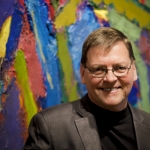
Dr. Doug Borwick
Lessons from the Ballpark
Posted by Oct 04, 2012 2 comments

Dr. Doug Borwick
 Doug Borwick
Doug Borwick
Last month I was minding my own business attending a minor league baseball game with friends, thinking not a whit about the arts. Then something remarkable happened.
Between innings, a young girl who had endured multiple open heart surgeries that saved her life was recognized, along with her family and doctor. She then ran around the bases as part of a program by the ball club called “Home Run for Life.”
This girl’s story had nothing to do with baseball. The program is clearly an effort on the part of the team to connect with its community. So that got me thinking...
What was the mindset that led to this promotion?
Clearly, it was about the team’s interest, for pragmatic reasons to be sure, in being seen as a responsible, caring member of the community. What really got the wheels turning was trying to imagine something similar happening in the arts.
Some of you may say that such a program would not be appropriate for an arts organization, and I am certainly a stickler for focus in adhering to the mission. This specific example is probably not a helpful model. But it’s the mindset that led to the "Home Run for Life" program that intrigues me.
What sorts of activities might come from a view of the “arts self” wanting to connect with the community, even ones that were not directly related to the arts?
After I started down that road, I began to look at the other activities at the ballpark that evening. There were fan participation activities, singalongs (including, of course, “Take Me Out to the Ballgame”), contests, and fireworks at the end. Many of them were silly to the point of being embarrassing. Many (most?) had little or nothing to do with baseball. I would certainly not advocate for toddler races in Symphony Hall!
But in the light of my earlier post about the way arts events have become much more staid, more static experiences in the last hundred years, might not a “community-centered” approach to programming lead to some healthy change?
By the time we got to the end of the game I had taken yet another turn.
 A night game of the Winston-Salem Dash. (Photo via MarkGregory007 on Flickr/Creative Commons)
A night game of the Winston-Salem Dash. (Photo via MarkGregory007 on Flickr/Creative Commons)
What is it about minor league baseball that encourages the activities we witnessed?
My immediate assessment was that it is a for-profit entertainment venture. As such, it behooves the management to engage in every way practical with as much of the community as possible.
As a spectator who is not particularly interested in baseball for itself, I go (on the occasions when I do) because it’s fun, it’s entertaining. And the beer is not too expensive, especially on Thirsty Thursday.
Not-for-profit arts organizations are mission-driven, making them different animals from minor league baseball. In the baseball games, it’s OK if for many attendees the experience is not “about” baseball. We are still paying for the tickets.
Our arts events must be about the arts; however, they must also, because of the 501(c)(3) structure, be about serving the community. I would further argue that apart from that legal argument, the arts should be community-focused. It is in the realm of community connection that many arts organizations have little experience.
The details of game-day activities in minor league sports may have nothing to offer, but the perspective of being community partners should offer us some new thoughts about ways to connect and serve.
Engage!
(Editor's Note: A slightly varied version of this post appears on Doug Borwick’s blog Arts Engaged.)

Comments
I am still wondering why there are not "share the music" events. These would be good old fashioned nights of sitting around listening to CD's or mp3's or whatever music format fits your fancy. The act of the audience member being able to share their favorite music is major participation. It would serve the community as well since there is an educational component and a social aspect.
I adore the programs for the "Rusty Musicians," yet I think we also need to include the avid listener. Listening is part of the experience, so why not create this event where the listener is the "music director."
In both of these cases, the programs are still all about the music - grassroots, community, music sharing programs.
These are two fine examples of how we can most definitely serve the community as well as our missions. Great post, Doug, and thank you!
Hello Doug -
I simply had to respond (partly because of our Yankees clinching yesterday -- at last!) Your story about fan engagement reminds me of a wonderful program Josephine Ramirez started when she was at the LA Music Center. Since it's well known that 2/3 of classical music attendees played an instrument at some point in their lives, Josephine started a "Get Your Chops Back" program on the public space outside the Center. People were invited to bring their instruments and jam with musicians from the LA Phil. They weren't pushed to buy a ticket but their participation was personal and celebratory as they were invited into the LA Music Center "family." Linking personal practice to professional performance seems to me to be a promising approach to connecting to potential audiences and serving community needs.